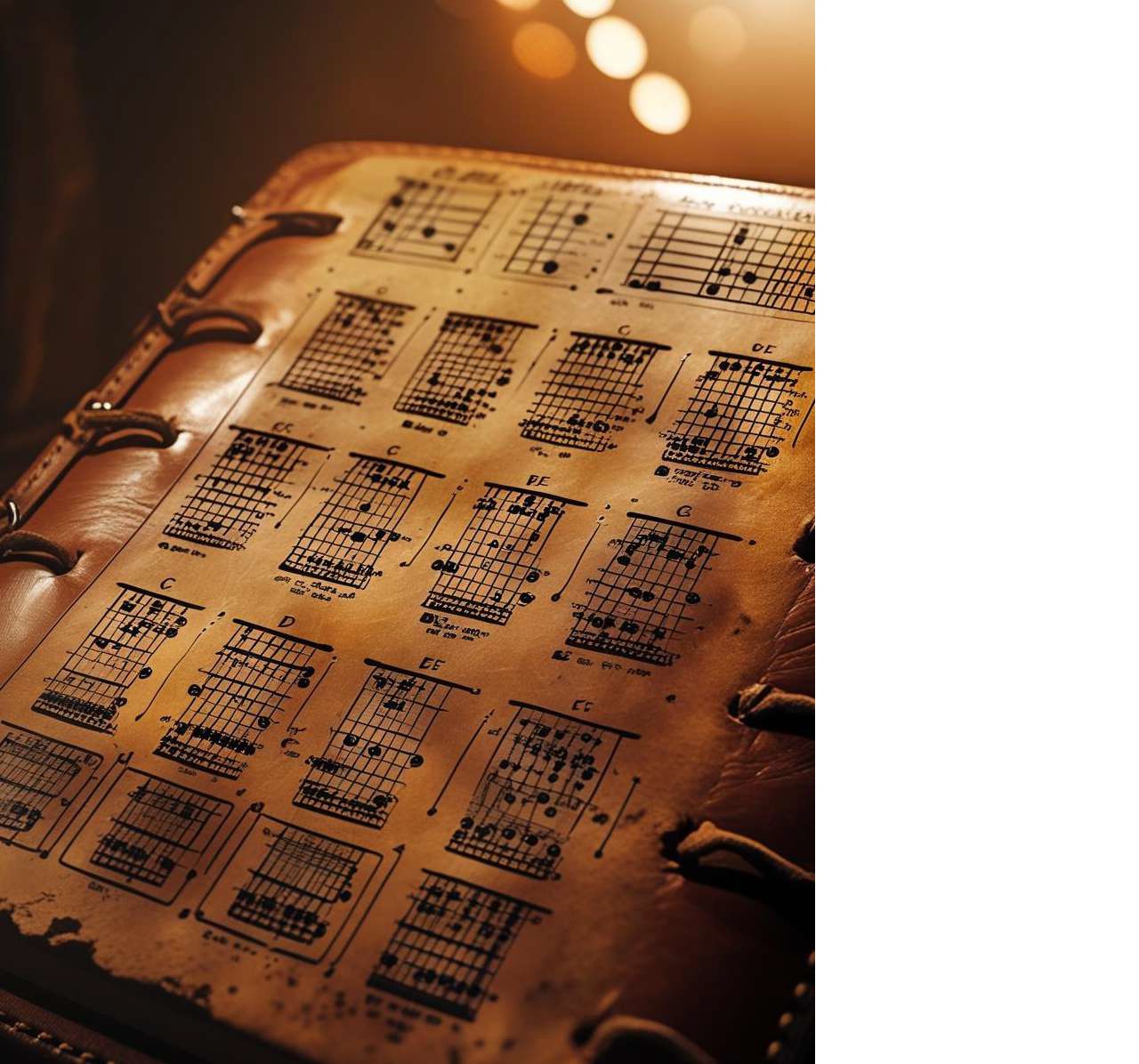Cavezane’s biomusical proposal: critical analysis of his sonic theorization
DOI:
https://doi.org/10.59028/misostenido.2025.09Keywords:
acoustics, musical instruments, music therapy, sound, music theoryAbstract
Background: Music therapy is firmly grounded in evidence-based clinical practice, yet weak institutional control has allowed unverified theories to flourish, notably Gustavo Cazenave’s “biomusic”, which blends esotericism with the Western classical canon. Objectives: This paper critically examines Cazenave’s sonic taxonomy—“characteristics, classes and quantification of sound”—to protect the theoretical underpinnings that legitimise therapeutic music work. Method: A systematic, comparative reading of the 2024 revised edition of Biomúsica. Los efectos de la música sobre el cuerpo y la mente was undertaken. Sections dealing with acoustics and music theory were cross-checked against specialised scholarship to assess accuracy and coherence. Results: The analysis uncovered multiple terminological mistakes, internal inconsistencies and flawed acoustic data. Misuse of basic parameters (intensity, pitch, timbre), ad-hoc labels such as “open” or “femoral” sounds, and erroneous statements about human auditory limits exemplify these flaws. When presented under the banner of music therapy, such inaccuracies threaten both academic progress and client safety. Conclusions: The study calls for rigorous acoustic and musicological knowledge in any intervention claiming therapeutic value. It urges the profession to maintain critical oversight and reject pseudo-scientific appropriations, thereby safeguarding the interdisciplinary dialogue that underpins clinical effectiveness.
Downloads
References
Adler, S. (2002). The study of orchestration. W. W. Norton & Company.
American National Standards Institute. (2004). American National Standard acoustical terminology (ANSI S1.1-1994 (R2004)). American National Standards Institute.
Amorós-Sánchez, B., Gamella-González, D. J., Cisneros-Álvarez, P., & Gisbert-Caudeli, V. (2024). A systematic review of the technology available for data collection and assessment in music therapy. In International Conference on ArtsIT, Interactivity and Game Creation (Vol. 564, pp. 41–54). Springer Nature Switzerland. https://doi.org/10.1007/978-3-031-55319-6_4
Arditti, I., & Platz, R. H. P. (2013). The techniques of violin playing / Die Spieltechnik der Violine. Bärenreiter.
Asensio, J. C. (2003). El canto gregoriano: Historia, liturgia, formas. Alianza Editorial.
Barker, A. (2009). The science of harmonics in Classical Greece. Cambridge University Press.
Beament, J. (2001). How we hear music: The relationship between music and the hearing mechanism. The Boydell Press.
Benenzon, R. O. (1991). Teoría de la musicoterapia. Mandala Ediciones.
Bergeron, K., & Bohlman, P. V. (Eds.). (1992). Disciplining music: Musicology and its canons. University of Chicago Press.
Blain-Moraes, S., Chesser, S., Kingsnorth, S., McKeever, P., & Biddiss, E. (2013). Biomusic: A novel technology for revealing the personhood of people with profound multiple disabilities. Augmentative and Alternative Communication, 29(2), 159–173. https://doi.org/10.3109/07434618.2012.760648
Boecio. (2009). Sobre el fundamento de la música. Editorial Gredos.
Bowling, D. L. (2023). Biological principles for music and mental health. Translational Psychiatry, 13, 374. https://doi.org/10.1038/s41398-023-02671-4
Bruscia, K. E. (Ed.). (2012). Readings in music therapy theory. Barcelona Publishers.
Bruscia, K. E. (2014). Definiendo la musicoterapia. Barcelona Publishers.
Bunt, L. (1994). Music therapy: An art beyond words. Routledge.
Calvo-Manzano Ruiz, A. (2001). Acústica físico-musical. Real Musical.
Cazenave, G. (2024). Biomúsica: Los efectos de la música sobre el cuerpo y la mente. Mandala Ediciones.
Chaigne, A., & Kergomard, J. (2016). Acoustics of musical instruments. Springer.
Cheung, S., Han, E., Kushki, A., Anagnostou, E., & Biddiss, E. (2016). Biomusic: An auditory interface for detecting physiological indicators of anxiety in children. Frontiers in Neuroscience, 10, 401. https://doi.org/10.3389/fnins.2016.00401
Cheyne, P., Hamilton, A., & Paddison, M. (2019). The philosophy of rhythm. Oxford University Press.
Citron, M. J. (1993). Gender and the musical canon. Cambridge University Press.
Darnley-Smith, R., & Patey, H. M. (2004). Music therapy. Sage Publications.
Davis, W., & Hadley, S. (2015). A history of music therapy. In B. Wheeler (Ed.), Music therapy handbook (pp. 17–28). Routledge.
DeFord, R. I. (2015). Tactus, mensuration, and rhythm in Renaissance music. Cambridge University Press.
Del Mar, N. (1983). Anatomy of the orchestra. University of California Press.
Dineen, D. (2024). ¿Qué sucede cuando hacemos musicoterapia?: La dinámica de la musicoterapia [What happens when music therapy happens: The dynamics of music therapy?]. Misostenido, 4(8), 23–30. https://doi.org/10.59028/misostenido.2024.22
Edwards, J. (2016). The Oxford handbook of music therapy. Oxford University Press.
Fernández-Company, J. F., Quintela-Fandino, M., Sandes, V., & García-Rodríguez, M. (2024). Influence of music therapy on the improvement of perceived well-being indices in women with breast cancer undergoing hormonal treatment. American Journal of Health Education, 55(5), 315–326. https://doi.org/10.1080/19325037.2024.2338458
Florentine, M., Popper, A., & Fay, R. (2011). Loudness. Springer.
Gallardo, R. D. (2011). Musicoterapia y salud mental: Prevención, asistencia y rehabilitación. Ugerman Editor.
Gamella-González, D. J. (2015). Bioarte: Procesos biotecnológicos, retos sociales y educación artística en la primera década del siglo XXI (Tesis doctoral). Universidad Complutense de Madrid.
Gamella-González, D. J. (2024). Editorial. Posicionamiento en musicoterapia [Leading article: Positioning in music therapy]. Misostenido, 4(8), 3. https://doi.org/10.59028/misostenido.2024.19
García Pérez, A. S. (2004). El concepto de consonancia en la teoría musical: De la escuela pitagórica a la revolución científica (Tesis doctoral). Universidad de Salamanca.
García-Rodríguez, M., Alvarado, J. M., Fernández-Company, J. F., Jiménez, V., & Ivanova-Iotova, A. (2023). Music and facial emotion recognition and its relationship with alexithymia. Psychology of Music, 51(1), 259–273. https://doi.org/10.1177/03057356221091311
Garrett, S. L. (2020). Understanding acoustics: An experimentalist’s view of sound and vibration. Springer.
Gauldin, R. (2009). La práctica armónica en la música tonal. Akal.
Goodman, K. D. (2011). Music therapy education and training. Charles C Thomas Publisher.
Grabner, H. (2001). Teoría general de la música. Akal.
Hall, A. C. (2005). Studying rhythm. Pearson.
Hartmann, W. M. (2013). Principles of musical acoustics. Springer.
Hasty, C. F. (1997). Meter as rhythm. Oxford University Press.
Hernández-Sampieri, R., Fernández Collado, C., & Baptista Lucio, P. (2014). Metodología de la investigación. McGraw-Hill España.
Hiley, D. (1993). Western plainchant: A handbook. Clarendon Press.
Ingard, U. (2008). Notes on acoustics. Infinity Science Press.
International Organization for Standardization. (2009). ISO 3382-1:2009. Acoustics—Measurement of room acoustic parameters—Part 1: Performance spaces. UNE/ISO.
Jauset Berrocal, J. A. (2011). Música y neurociencia: La musicoterapia. Sus fundamentos, efectos y aplicaciones terapéuticas. Editorial UOC.
Kartomi, M. (2001). The classification of musical instruments: Changing trends in research from the late nineteenth century, with special reference to the 1990s. Ethnomusicology, 45(2), 283–314.
Krumhansl, C. L. (2001). Cognitive foundations of musical pitch. Oxford University Press.
Lasocki, D. (2022). The recorder. Yale University Press.
Meyer, J. (2009). Acoustics and the performance of music. Springer.
Miller, R. J. (2015). Contemporary orchestration: A practical guide to instruments, ensembles, and musicians. Routledge.
Montagu, J., & Burton, J. (1971). A proposed new classification scheme for musical instruments. Ethnomusicology, 15(1), 49–70.
Myers, A. (1997). How brass instruments work. In T. Herbert & J. Wallace (Eds.), The Cambridge companion to brass instruments. Cambridge University Press.
Nowacki, E. (2017). The earliest antiphons of the Roman Office. In D. J. Di Censo & R. Maloy (Eds.), Chant, liturgy, and the inheritance of Rome. The Boydell Press.
Pedro Cursá, D. de. (1990). Teoría completa de la música (Vol. 1). Real Musical.
Piston, W. (1969). Orchestration. Victor Gollancz Ltd.
Piston, W. (1998). Armonía. SpanPress Universitaria.
Plack, C. J., Oxenham, A. J., Fay, R. R., & Popper, A. N. (Eds.). (2005). Pitch: Neural coding and perception. Springer.
Rehfeldt, P. (2003). New directions for clarinet. The Scarecrow Press.
Rossing, T. D. (2007). Springer handbook of acoustics. Springer.
Sachs, C. (1952). Rhythm and tempo: An introduction. The Musical Quarterly, 38(3), 384–398.
Salazar, F. (2024). Prólogo. La música sana. In G. Cazenave, Biomúsica: Los efectos de la música sobre el cuerpo y la mente (pp. 7–10). Mandala Ediciones.
Schaeffer, P. (2003). Tratado de los objetos musicales. Alianza Editorial.
Schaeffer, P. (2012). In search of a concrete music. University of California Press.
Schnupp, J., Nelken, I., & King, A. (2011). Auditory neuroscience: Making sense of sound. The MIT Press.
Sethares, W. A. (2005). Tuning, timbre, spectrum, scale. Springer.
Siedenburg, K., Saitis, C., McAdams, S., Popper, A. N., & Fay, R. R. (2019). Timbre: Acoustics, perception, and cognition. Springer.
Slawson, W. (1981). The color of sound: A theoretical study in musical timbre. Theory Spectrum, 3, 132–141.
Storm, S. (2013). Research into the development of voice assessment in music therapy (Tesis doctoral). Aalborg University.
Svoboda, M., & Roth, M. (2017). The techniques of trombone playing / Die Spieltechnik der Posaune. Bärenreiter.
Thaut, M. H., & Hoemberg, V. (2014). Handbook of neurologic music therapy. Oxford University Press.
Theorell, T. (2014). Psychological health effects of musical experiences: Theories, studies and reflections in music health science. Springer.
Thomson, J. M. (1995). The Cambridge companion to the recorder. Cambridge University Press.
Weber, W. (2011). La gran transformación en el gusto musical: La programación de conciertos de Haydn a Brahms.Fondo de Cultura Económica.
Weiss, M., & Netti, G. (2010). The techniques of saxophone playing / Die Spieltechnik des Saxophons. Bärenreiter.
Zamacois, J. (1966). Teoría de la música (Libro II). Labor.
Zimbaldo, A. (2015). Musicoterapia: Perspectivas teóricas. Paidós.








